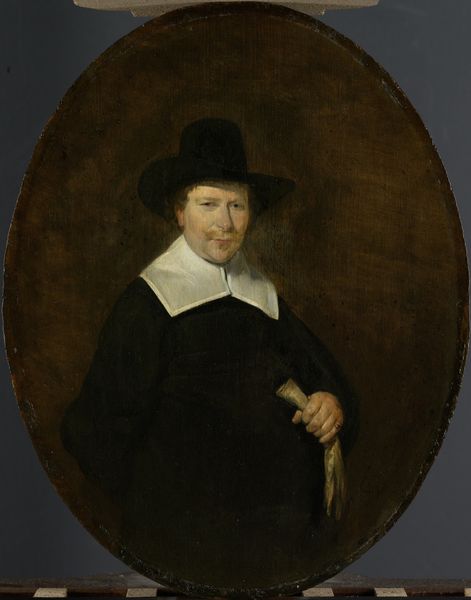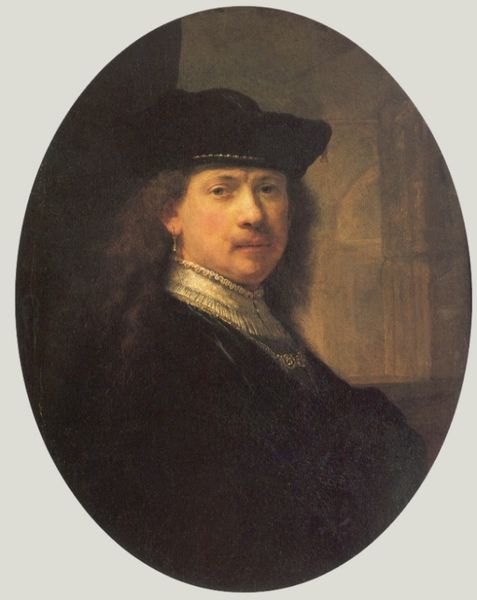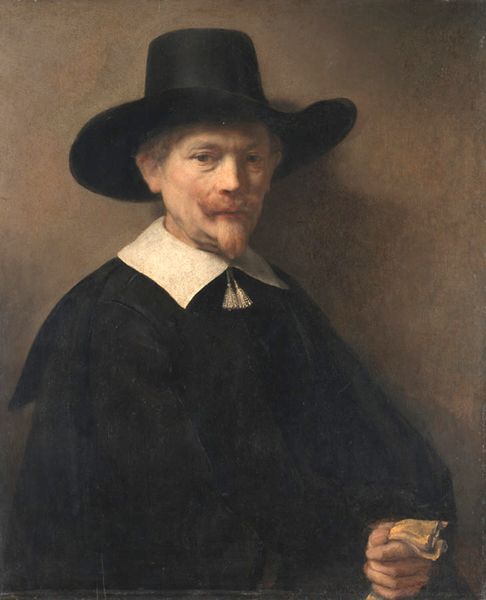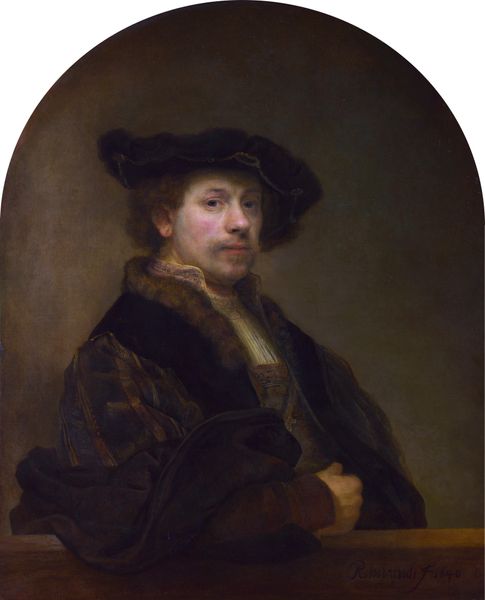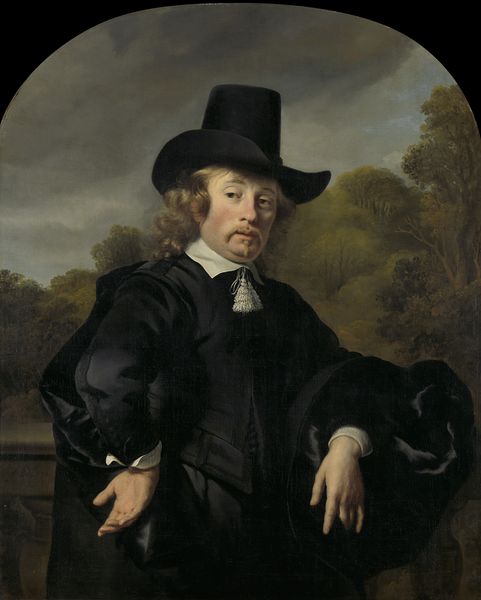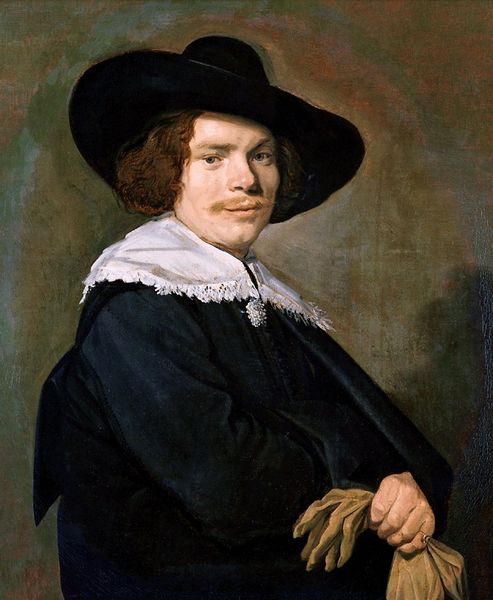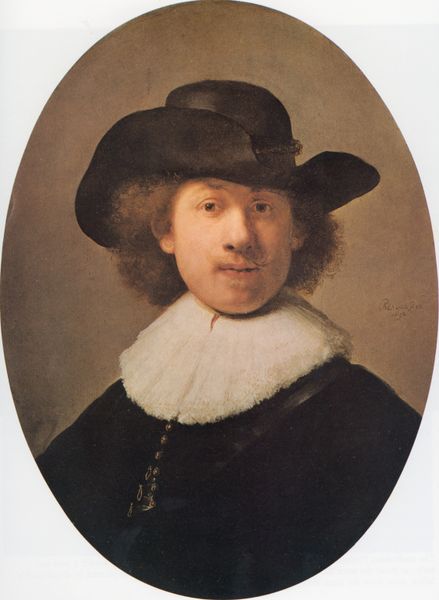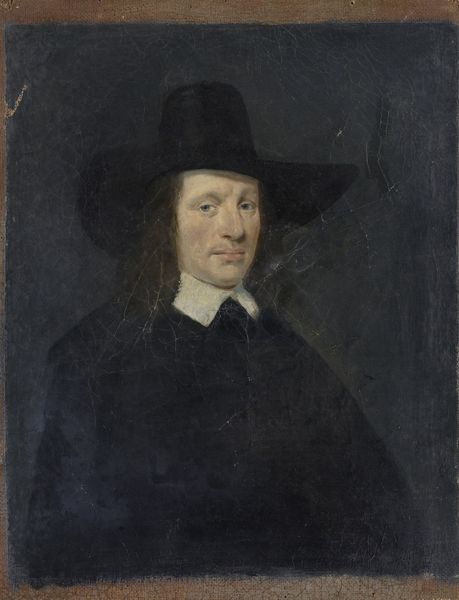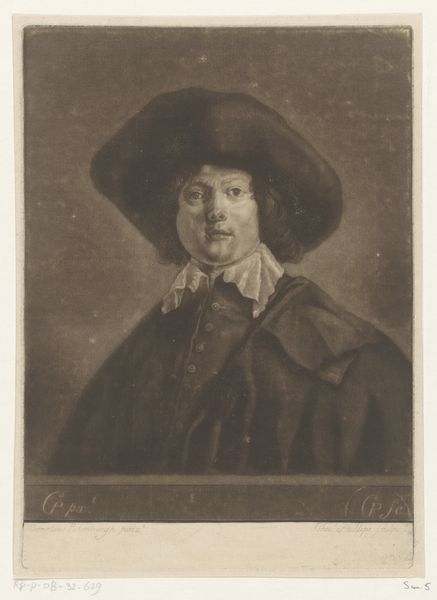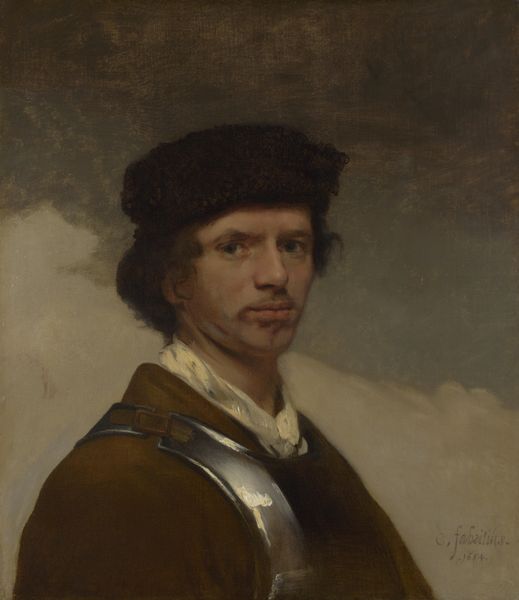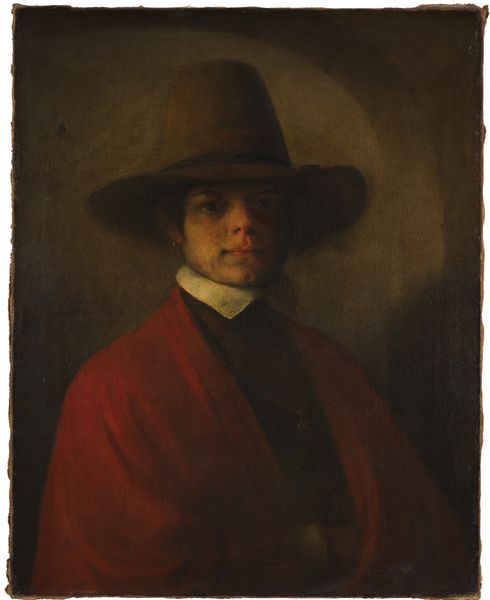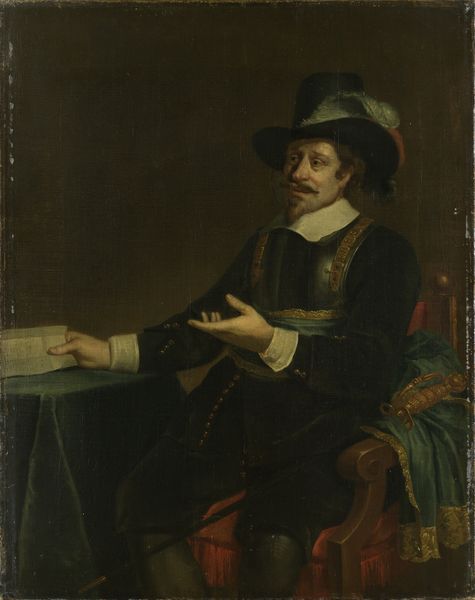
oil-paint
#
portrait
#
character portrait
#
low key portrait
#
portrait image
#
dutch-golden-age
#
oil-paint
#
portrait subject
#
figuration
#
portrait reference
#
portrait head and shoulder
#
portrait drawing
#
portrait character photography
#
fine art portrait
#
realism
#
celebrity portrait
Dimensions: height 86 cm, width 65.5 cm, depth 7.5 cm
Copyright: Rijks Museum: Open Domain
Editor: We’re looking at Johannes Verspronck’s "Portrait of a Man," painted in 1646. It's an oil painting and something about the dark colors and direct gaze feels both intimate and imposing. What do you see in this piece? Curator: I see a carefully constructed presentation of masculine identity within a specific historical moment. This portrait isn't just about capturing likeness; it's about conveying social status and adherence to cultural norms. Think about the Dutch Golden Age - the rise of a powerful merchant class, and with it, a desire for public recognition. How does the man’s clothing contribute to this image? Editor: Well, his clothes are dark, and the hat seems significant. He doesn't stand out through bright colors, but with this seriousness instead? Curator: Precisely. It speaks volumes. Black dye was expensive and reserved for the wealthy. And note the lace collar – another signifier of status and meticulous attention to detail. The sitter uses understated elegance to project an image of himself. He isn’t ostentatious, but projects power. Editor: So, the portrait acts as a kind of advertisement? A way to signal status in a society that was rapidly changing? Curator: Exactly. And considering the period’s artistic trends, we see a deliberate move away from religious iconography towards individual representation. Patrons became the new locus of power. Notice also how Verspronck has carefully crafted an active engagement with the viewer. What is the sitter trying to communicate? Editor: He seems confident and self-aware. Almost like he's assessing *us* as we look at him. Curator: The painting reveals the interplay between the artist, the sitter, and the emerging socio-political landscape of the Dutch Republic. Editor: I see it now, it’s more than just a pretty picture, it’s a record of a specific culture at a crucial moment. Curator: Indeed, it is a tangible record, but equally, it reflects the active role of imagery in constructing social power.
Comments
No comments
Be the first to comment and join the conversation on the ultimate creative platform.

